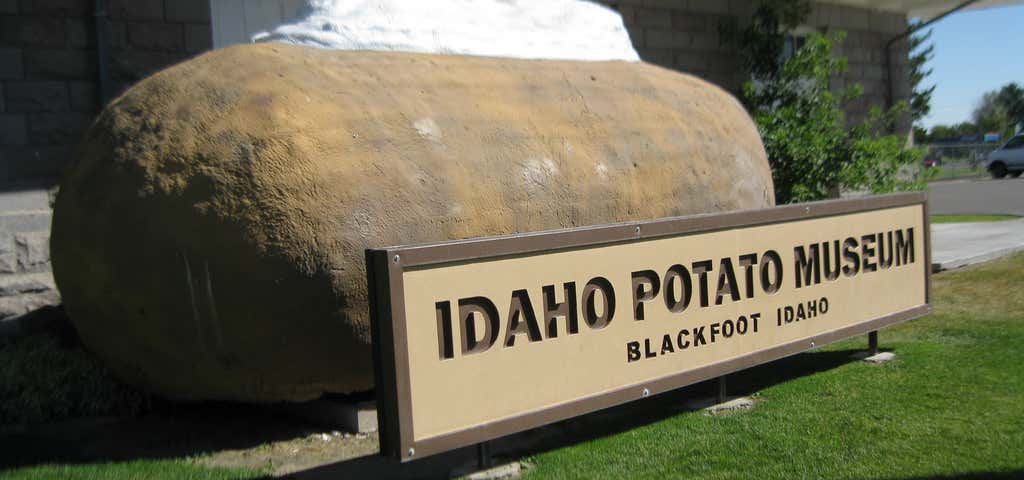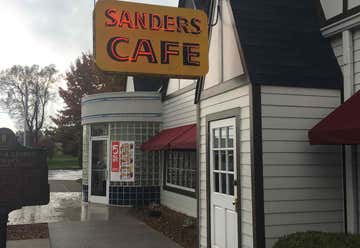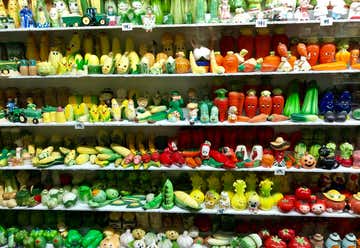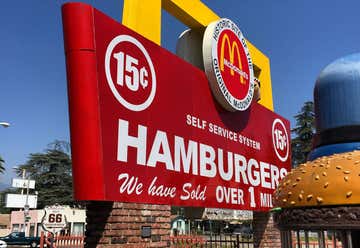Ever thought about how that Big Mac (which you scarfed down while sitting in the parking lot of a McDonald's as shame washed over) has a story behind it? Or even the mustard on the burger, the potatoes that made up your fries, and the Coke you washed it all down with... they all have a fascinating history and past. You can uncover the little-known facts and tidbits about your favorite foods (or some foods that are just so quirky, you have to wonder) at these offbeat and interesting food museums.
The history of Jell-O is just as fascinating as the food itself. Originally created when a carpenter from LeRoy, New York used gelatine in what he hoped would be a cough and cold remedy, it took a marketing expert to take Jell-O to household name. LeRoy's Jell-O Gallery commemorates Jell-O's rise to icon status. Old Jell-O ads and packages, molds, recipes, and more make the museum worth a quick little browse. The gift shop has more molds, cookbooks, and (of course) boxes of Jell-O for sale in case you're inspired to start experimenting with aspics and Jell-O salads.
Is there any candy brand more beloved than Hershey? (Except maybe Willy Wonka, but he is, sadly, very fictional.) The town of Hershey, PA is the perfect destination for anyone with a sweet tooth. It's home to Hershey's Chocolate World, the visitor center for the factory. Make your own chocolate bar, experience a chocolate tasting, watch a 4D movie, ride the trolley, tour the factory, and, of course, stock up on everyone's favorite sweet treats!
Yellow, ballpark, Dijon, whole grain... and that's just the tip of the iceberg when it comes to the kinds of mustards you'll find at the National Mustard Museum. As the story goes, it all started when a depressed Barry Levenson found himself seeking solace from the depression of the Boston Red Sox losing the World Series in the 1980s in a supermarket. To distract himself from the pain, he bought a few kinds of mustard, and it spiraled from there. Now, he is a museum curator and condiment king who owns 5,500 mustards from all 50 states and more than 70 countries, along with antique mustard jars and paraphernalia. It's free to visit, so stop by, sample a few spreads, and buy something delicious to add to your next hot dog or pretzel.
Seriously, who doesn't love cheese? Located in a restored historic cheese factory, the National Historic Cheesemaking Center and Museum is the perfect place for cheese enthusiasts to learn more about the subtle art of cheesery. Learn how cheese was made in the 19th and early 20th centuries, and watch an edutaining video on how cheese is made today.
Sure, SPAM is about as controversial a food as you can find, but even if you're not a spiced ham lover, you're probably still at least a bit curious about the potted meat. You'll learn all about what it's made of (it really isn't that bad!), how it's made, the other variations, and the history of the brand. But, remember; as they say at the SPAM Museum... "Please don't eat the exhibits".
The Oscar Getz Museum of Whiskey is, of course, located in Kentucky, and provides an insanely in-depth look at the history of hooch. From pre-colonial whiskey-making equipment to post-Prohibition artifacts, you'll get to see some pretty cool stuff here. Real moonshine stills, antique and novelty bottles, info on whiskey as medicine, ads, and loads more give lots of insight into this favorite liquor. Plus, Bardstown is located along the Bourbon Trail, so you won't have a hard time finding some top-notch places for a nip of whiskey.
Besides whiskey, Kentucky is also known for one other thing: Kentucky Fried Chicken. The Harland Sanders Museum and Cafe is mostly a KFC (across the street from the very first KFC location), with a few exhibits, objects, and some information on The Colonel and how he and his delicious fried chicken exacted world domination (KFC is one of the biggest fast food chains in the world!)
OK, so the Salt and Pepper Shaker Museum is less dedicated to the seasonings and more dedicated to the receptacles they go in, but it's still an awesome stop. They have over 20,000 shaker sets now, and keep adding more. If you want to be rendered speechless by an unreal number of kitschy, cute, giant, small, and otherwise neat salt and pepper shakers, definitely check it out. Oh, and don't leave without buy a set for yourself!
Atlanta may be the home of Coke now, but back in the 1890s, it was first bottled in the little town of Vicksburg, Mississippi. This place is loaded with old Coca-Cola ads, bottle equipment, memorabilia, and tons more... and, as an added bonus, it's also a vintage soda fountain where you can get an old-school Coke float!
Speaking of soft drinks, another soda that's historic enough to have a museum is Dr Pepper. It came from a Waco drug store, and it debuted nationally at the 1904 World's Fair to much success. The museum takes you through history, following the drink as it became an American favorite. But, if you're wondering who the real-life Dr Pepper was, you're in for a bit of a disappointment; no one at the museum is sure of the actual origin of the name, but they've collected dozens of legends and stories.
No trip to Idaho is complete without a stop at the Idaho Potato Museum. Pose for a picture of the giant potato out front, then head inside and learn everything you never knew about the humble potato. From the displays of vintage potato peelers to the actually really fun potato facts to the waffle fries in the cafe, this is an immersive and engaging stop for anyone who is passing by.
And then, of course, there's the First McDonald's. This is the original McDonald's location, owned and operated by the McDonald brothers, not the first franchised location opened by Ray Kroc in Des Plaines, Illinois. It was the McDonald brothers who changed the restaurant industry by taking their successful diner, firing the car hops, cutting the menu down to few most popular items, and optimizing for efficiency, consistency, and value. Even if you're not a fan of the Golden Arches, you have to admire the McDonald brothers for just how much they revolutionized the industry. Plus, since this is McDonald's, you can see a ton of old memorabilia, especially stuff from the McDonaldLand era.
Whatever your taste, there's probably a food museum that can satisfy any craving. As you learn the history of some of America's favorite eats (and drinks), you'll undoubtedly work up an appetite as well!
Steven Yackel
I am a road tripper at heart. I love to be on the road visiting all the sites. I enjoy hiking, visiting National Parks, stopping at quilt stores, Museums, Lighthouses, eating local food and washing it all down with a cold craft beer,














